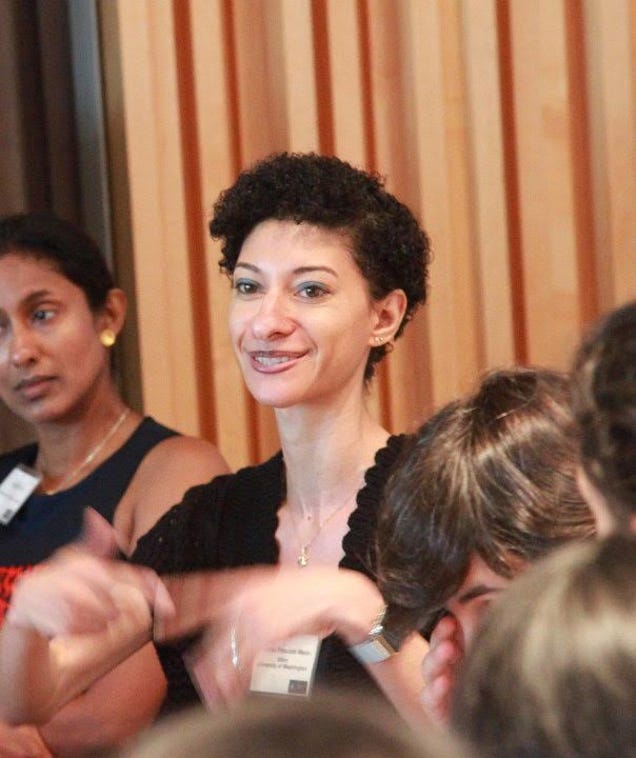The Physics of Melanin: Science and the Chaotic Social Construct of Race
Bitch Media
2016-12-19
Dr. Chanda Prescod-Weinstein, Research Associate
Department of Physics
University of Washington, Seattle
It could have been earwax. It turns out that the texture of a person’s earwax is not determined by environment but rather is written into a person’s genetic code. Some of us have hard, dry earwax, some of us have goopy earwax, and some of us have a combination. Thus, 500 years ago when it seemed useful to Europeans to start organizing people by skin color, they could have gone by earwax instead. Had they, for some reason or another, been fascinated by earwax, chattel slavery might have been organized around whoever had the earwax that was deemed less valuable. Race might have been defined by our ear excretions.
Inferior Science
Hundreds of years after the advent of chattel slavery, it’s easy to see why race is defined by skin color. Skin color offers a highly visible cue that makes sorting easy—at least until rape proliferates. The variation in human skin tones is due to a pigment called melanin, which comes from the Greek word melas, “black, dark.” Melanin is found in most living creatures, and when it is studied scientifically, researchers usually use the ink of Sepia officinalis, the common cuttlefish. Our social sorting by skin color can be put in more technical terms as a question of how much melanin our bodies produce and maintain as part of our epidermic structure.
Of course, in 2016, melanin content is not the only reason for one’s identification or racialization as Black. Today, Blackness is recognized as a cultural identity that is entangled with a historicity rooted in melanin content but not limited to it. In one study, the same picture of a woman with dark skin was racialized differently when her skin was lightened, and especially when her nose was made smaller. Studies show that phenotypic stereotypes about nose shape, hair texture, and hair melanin content function as cues in tandem with skin melanin. Meanwhile, what we have learned from studying dna and biochemistry tells us that sorting people by skin color is arbitrary for many scientific purposes, and that race is more about how we organize ourselves than about any absolute scientific truth. As the Africadian George Elliott Clarke, Canada’s parliamentary poet laureate, tells it, “Black is maple brass coffee iron mahogany copper cocoa bronze ebony chocolate.” Black identity is a sociogeographic construct with a real but tenuous connection to science.
Technically, melanin is a set of biomolecules that we think are synthesized by enzymes and that are notably very visibly colored. There are three types of melanin: the most common, eumelanin, which appears black or brown and occurs in skin and hair; the less abundant pheomelanin, which is on the yellow-to-red spectrum; and neuromelanin, which appears in high concentrations in the human brain, but the function of which we essentially don’t understand at all. For the most part, it seems, we don’t understand melanin…
…Today, many of us would agree there is no scientific basis for the animus toward eumelanin-abundant people, only economic convenience. The timeline is consistent with this perspective, since race was invented hundreds of years before the 19th-century discovery of melanocytes—the cells that produce the pigment we call melanin. Before that, racial construct was a chaotic mix of hatred, cruelty, greed, and perversity. In a classic example of the illogical nature of racial construction, we have Thomas Jefferson, who owned his Black mistress (or what many of us today would call “sex slave”) Sally Hemings and their children, waxing on about whiteness: “Are not the fine mixtures of red and white, the expressions of every passion by greater or less suffusions of color in the one [whites], preferable to that eternal monotony, which reigns in the countenances, that immovable veil of black, which covers all the emotions of the other race?” In other words, the still highly esteemed founding father of the United States preferred the expressive faces of free white people to the stoic faces of enslaved Black people, and he believed these apparent differences were due to race, not relative states of freedom and captivity…
Read the entire article here.




